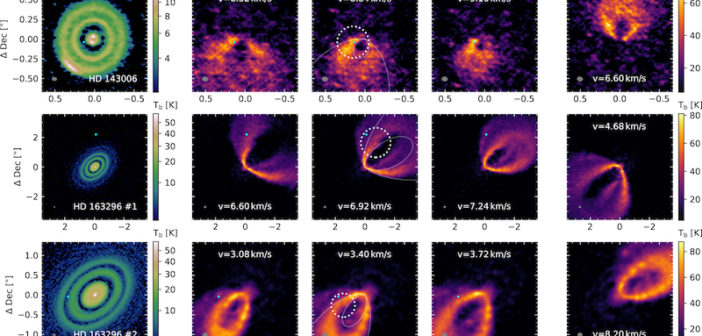Are baby planets responsible for the gaps and rings we’ve spotted in the disks that surround distant, young stars? A new study led by Christophe Pinte (Monash University, Australia; Univ. Grenoble Alpes, France) has found evidence supporting this theory in the images of eight circumstellar disks observed in the Disk Substructures at High Angular Resolution (DSHARP) project. DSHARP uses the Atacama Large Millimeter/submillimeter Array (ALMA) to explore the gas distributed within the disks around young stars. In the image above (click for the full view!) the left-most panel shows the 1.3-millimeter dust continuum images of five complex circumstellar disks. The panels to the right show gas measurements for each disk in different velocity channels, revealing “velocity kinks” — deviations from the normal Keplerian velocity expected from unperturbed, orbiting gas. According to Pinte and collaborators, the kinks signatures of planets that perturb the gas flow in their vicinity. For more information, check out the article below.
Citation
“Nine Localized Deviations from Keplerian Rotation in the DSHARP Circumstellar Disks: Kinematic Evidence for Protoplanets Carving the Gaps,” C. Pinte et al 2020 ApJL 890 L9. doi:10.3847/2041-8213/ab6dda


1 Comment
Pingback: From AAS NOVA: “Featured Image: Evidence for Planets in Disks?” | sciencesprings